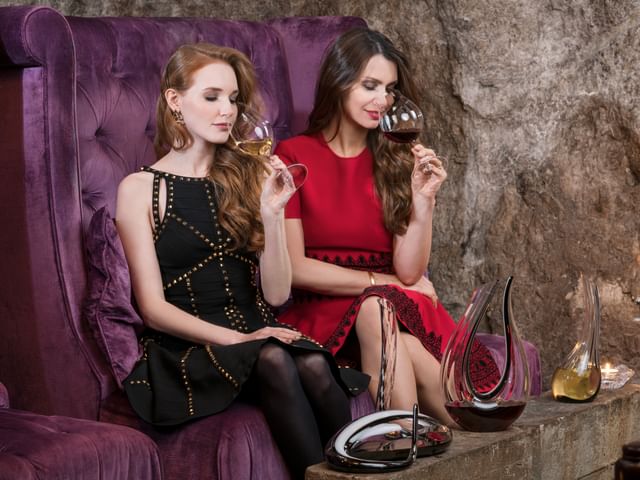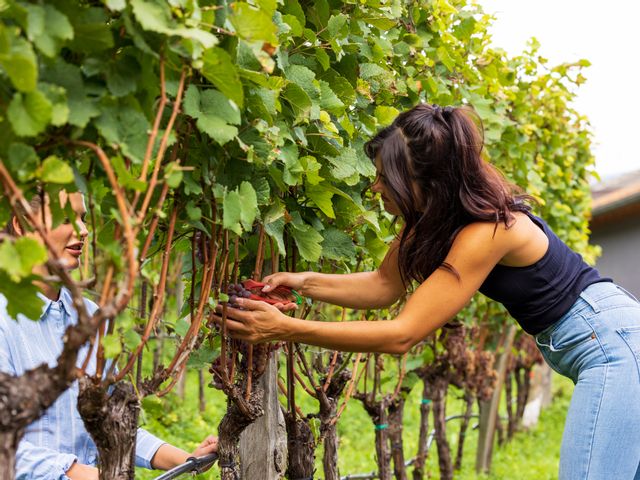Old world? New world?
A world of wine and so many tastes

Distinguishing between the old masters and the new kids on the block.
It's inevitable; if you're new to wine and discovering all of the related terminologies, there are several twists and turns along the way that are likely to stump you. One thing every wine enthusiast will come across at some point in their wine journey is the concept of 'Old World' and 'New World' wines. You can find yourself in a position where, for example, you've just learned about Pinot Noir and its general characteristics, and now you're discovering that there can be Old World Pinot Noir and New World Pinot Noir - and you might even need to use a different glass, depending on which it is!
So, what do these terms mean, and why does it matter? To help budding wine lovers overcome this potentially confusing area, in this blog, we'll talk about the fundamental differences between the meanings of the terms 'Old World' and 'New World' and the differences this can make to the wine you're enjoying.

What do Old World and New World mean?
'Old World' and 'New World' aren't exclusively used for wine. They are used in various contexts and are simply historical and geographical terms that refer to different regions of the world - primarily in the context of the exploration and colonization of the continents.
'Old World' typically refers to Europe, North Africa, and the Middle East, where many of the world's ancient civilizations originated and flourished, such as the Egyptians, Greeks, Romans, and various empires. These parts of the world have the longest histories of established trade, historical exploration, and colonization.
'New World,' on the other hand, primarily encompasses the continents of the Americas and Oceania. Although indigenous groups inhabited these lands for thousands of years, the 'New World' label refers to the more recent history of these areas being explored or colonized by European nations.
The differences between Old World and New World wines
So we've explained what Old World and New World mean, but what difference does this make to their qualities and how you should drink them? A few key variables lead to Old World and New World grape varieties being associated with different attributes and characteristics. There is, therefore, a need in some cases for one wine glass designed to make the most of a grape variety produced in the Old World, and another wine glass designed to make the most of that same variety grown in the New World. So, what are these variables?

Climate
It'll be no surprise to hear that climate variability considerably impacts a wine's qualities. Warmer growing seasons typically result in grapes with higher sugar levels, lower acidity, and faster ripening. In comparison, cooler growing seasons result in grapes with lower sugar levels, higher acidity, and slower ripening.
Generally, Old World wine-producing regions have temperate climates that produce subtly balanced wines with high minerality, while New World wines often have lower acidity and pronounced fruit flavors. This is underlined by major European wine regions such as France, Northern Italy, and Germany, all having temperate climates, while California, Australia, and Chile are all significant contributors to the New World wine market. This is far from a hard and fast rule, though, especially in the case of New World wines, with plenty of countries (New Zealand, Canada) and regions (Washington, USA) having cool to temperate climates.
Terroir
'Terroir' encompasses the complete natural environment where wine is produced, including the climate, but also the soil and the topography around vineyards.
The key terroir difference between Old World and New World wines actually has more to do with how winemakers consider this variable. Wine producers in the Old World place a strong emphasis on terroir, and wine styles often reflect the unique characteristics of a region's geography and cultural practices. The terroir is what is being referenced when you hear of the appellation d'origine contrôlée (AOC) of some French wines or the denominazione di origine of Italian wines. In contrast, in the New World, less focus is placed on the terroir of the wine, with more focus going on the techniques used to make the wine - which brings us to the next variable.

Winemaking techniques
Old World wine producers more commonly favor traditional winemaking methods. This means minimal intervention on the winemaker's part, instead relying on the natural fermentation process to do the job, which often makes for balanced, acidic wines with subtle complexity. On the other hand, New World winemakers are more likely to employ modern winemaking techniques, including temperature-controlled fermentation, new oak barrels, and various aging methods, which can make for wines that are approachable at a younger age.
With so many differences in wine production between the Old World and New World, it's no wonder you end up with wines that can differ considerably. This is why, in some instances, we offer Old World glasses and New World glasses for the same grape. Take our RIEDEL Syrah and RIEDEL Shiraz glasses, for example. RIEDEL Syrah glasses are designed to deliver a long, savory finish to each sip, emphasizing Old World Syrah wines' soft fruit and earthy characteristics. Meanwhile, our RIEDEL New World-specific Shiraz glasses offer a slightly tapered opening, allowing wines to retain a dignified structure as their intense, fruity aromas develop inside the large bowl. For more information on selecting the right glass for your wine, check out our Wine Glass Guide.
Hopefully that clarifies the differences between the terms 'Old World' and 'New World' and how they relate to wine. It may seem like an unusual distinction to make at first, but it's something you'll likely come across during your wine journey and might help you understand why a wine exhibits certain qualities when you look at the label!
Locations

